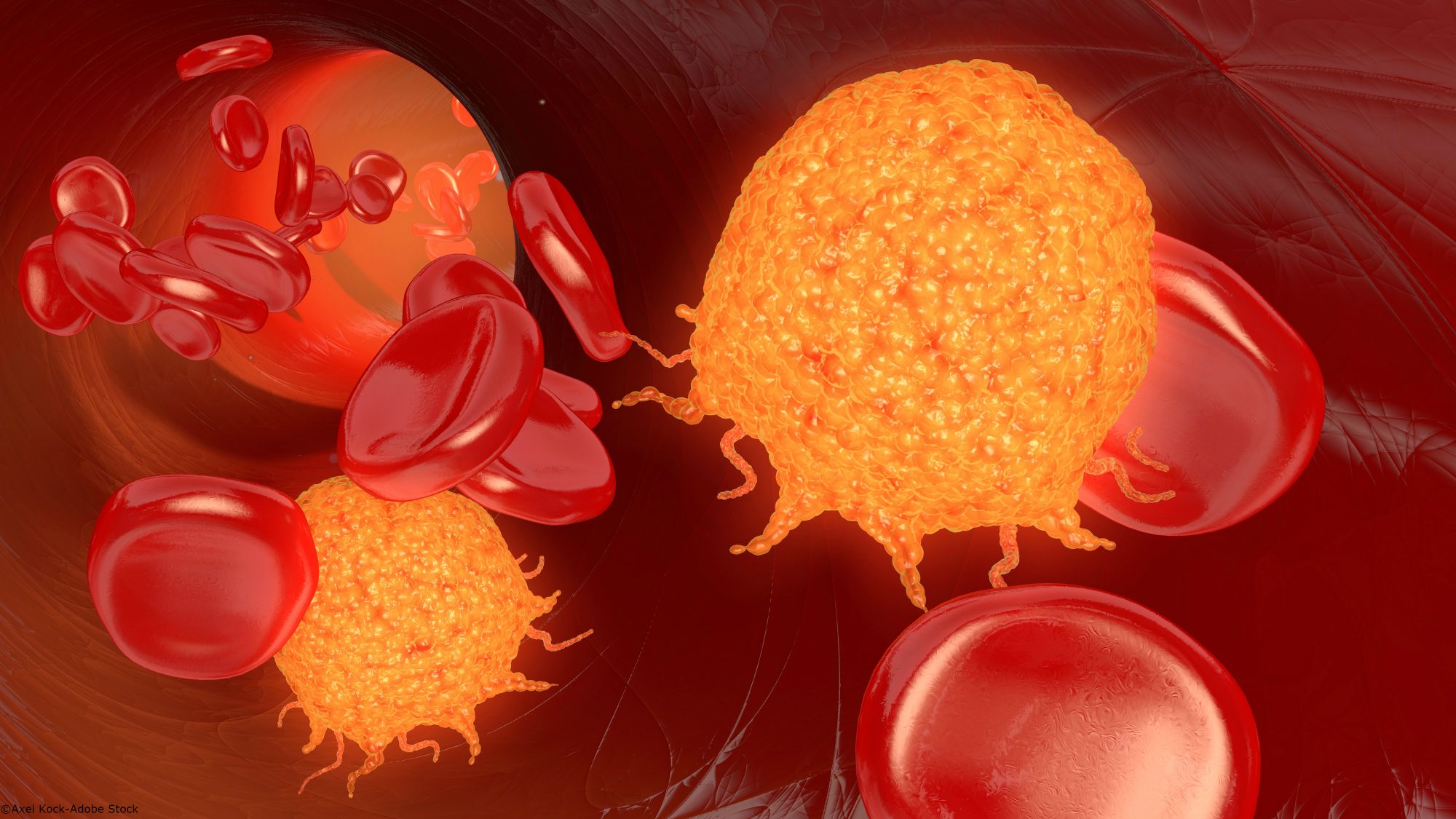Tuspetinib Triplet Therapy Achieves Early Responses in AML
A total of 3 patients with AML treated with the lowest dose of tuspetinib at 40 mg completed the first cycle of treatment with no dose-limiting toxicities.
A total of 3 patients with AML treated with the lowest dose of tuspetinib at 40 mg completed the first cycle of treatment with no dose-limiting toxicities.

A triple drug therapy composed of tuspetinib (HM43239) in combination with venetoclax (Venclexta) and azacitidine (Vidaza) achieved early responses in a small cohort of patients with newly diagnosed acute myeloid leukemia (AML) ineligible to receive induction chemotherapy, according to a news release on findings from the phase 1/2 TUSCANY trial (NCT03850574) from the drug’s developer, Aptose.1
Data from the first cohort of patients with AML treated with the lowest starting dose of tuspetinib at 40 mg (n = 4) revealed that 3 patients with unmutated wild-type FLT3 disease completed the first cycle of study treatment with no dose-limiting toxicities (DLTs) or dose adjustments observed. Additionally, 2 of these patients achieved a complete remission (CR), including 1 with a CR with partial hematologic recovery (CRh), by the end of the first treatment cycle.
Of note, a patient with a biallelic TP53 mutations and a complex karyotype obtained a CR, and the third patient with unmutated FLT3 wild-type disease experienced significant bone marrow leukemic blast reductions and remains on study for cycle 2. A fourth patient with FLT3-ITD– and NPM1-mutant disease is still undergoing dosing in cycle 1 and was ineligible for response evaluation.
“These are very promising early results from the TUSCANY trial of [tuspetinib in combination with venetoclax and azacitidine] and the first indicators of the safety and efficacy we expected to see in [patients with] newly diagnosed AML,” Rafael Bejar, MD, PhD, chief medical officer of Aptose, stated in the news release.1 “To achieve a [CR] in cycle 1 in a [patient] harboring a TP53 mutation—one of the most adverse forms of AML—is particularly encouraging. With enrollment ongoing in the TUSCANY study, we look forward to reporting additional data as it becomes available.”
Patients enrolled on trial were randomly assigned to receive tuspetinib monotherapy, tuspetinib doublet therapy with venetoclax, or tuspetinib triplet therapy with venetoclax and azacitidine.2 Monotherapy dosing was broken up into 3 parts: an initial dose-escalation phase for up to 6 dose levels, a dose-exploration phase for up to 4 dose levels, and a dose-expansion cohort for up to 2 dose levels starting at 120 mg. Patients in the dose-escalation phase were enrolled in the dose-exploration phase if they achieved a clinical response at any dose level, and if 1 or fewer DLTs were observed in 6 patients treated in the dose-escalation phase, up to 20 patients could be enrolled in the dose-exploration phase.
A second dose-expansion cohort treated patients with tuspetinib as a doublet therapy with venetoclax in either 50 mg or 100 mg tablets for 2 dose levels. The initial tuspetinib dose in this cohort was 80 mg. A third dose-expansion cohort is actively treating patients with tuspetinib as a triplet therapy with venetoclax and azacitidine. Azacitidine was given as a 75 mg/m2 intravenous infusion, and the initial tuspetinib dose was 40 mg.
Primary end points include adverse events, maximum tolerated dose (MTD) of tuspetinib, and recommended phase 2 dose (RP2D) of tuspetinib. Secondary end points include CR and CRh rates, overall response rate (ORR), duration of response (DOR), disease-free survival (DFS), and overall survival.
Pharmacokinetic (PK) analysis for tuspetinib revealed that the addition of azacitidine did not affect plasma levels, avoiding the need for PK-interaction–related dose alterations.
“[Tuspetinib in combination with venetoclax and azacitidine] has the potential to treat large AML patient populations, including those with traditionally difficult-to-treat mutations, and improve patient outcomes right from the outset of treatment,” William G. Rice, PhD, chairman, president, and chief executive officer of Aptose, said in the news release.1 The ability to treat such diverse AML populations—including [patients with FLT3 wild-type disease]—with a favorable safety profile and without having to alter the standard of care dosing, differentiates our drug from many AML drugs in development.”
References
- Aptose’s frontline triple drug therapy with tuspetinib achieves notable responses in newly diagnosed AML patients in the phase 1/2 TUSCANY trial. News release. Aptose. February 12, 2025. Accessed February 13, 2025. https://tinyurl.com/bdzj79ks
- Clinical trial to evaluate the safety, tolerability, pharmacokinetics and pharmacodynamics of tuspetinib (HM43239) in patients with relapsed or refractory acute myeloid leukemia (TUSCANY). ClinicalTrials.gov. Updated December 20, 2024. Accessed February 13, 2025. https://tinyurl.com/yecnav7m
Newsletter
Stay up to date on recent advances in the multidisciplinary approach to cancer.